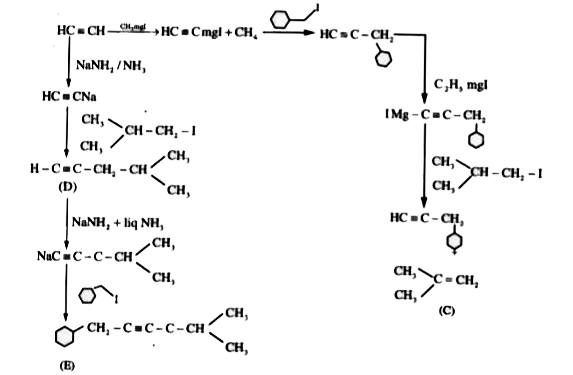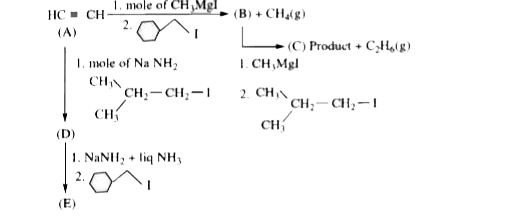
Product (B) is Solution in Telugu
H−C≡C−MgBr
BrMg−C≡C−MgBr


The correct Answer is:C
Topper's Solved these Questions
- BOOK - AAKASH SERIESCHAPTER - HYDROCARBONSEXERCISE - ADDITIONAL PRACTICE SHEET ( LEVEL-II (LECTURE SHEET (ADVANCED) (LINKED COMPREHENSION TYPE QUESTIONS(PASSAGE-V))))3videos
HYDROCARBONS
- BOOK - AAKASH SERIESCHAPTER - HYDROCARBONSEXERCISE - ADDITIONAL PRACTICE SHEET ( LEVEL-II (LECTURE SHEET (ADVANCED) (LINKED COMPREHENSION TYPE QUESTIONS(PASSAGE-VI))))3videos
HYDROCARBONS
- BOOK - AAKASH SERIESCHAPTER - HYDROCARBONSEXERCISE - ADDITIONAL PRACTICE SHEET ( LEVEL-II (LECTURE SHEET (ADVANCED) (LINKED COMPREHENSION TYPE QUESTIONS(PASSAGE-III))))3videos
HYDROCARBONS
- BOOK - AAKASH SERIESCHAPTER - GENERAL ORGANIC CHEMISTRYEXERCISE - QUESTIONS FOR DESCRIPTIVE ANSWERS35videos
GENERAL ORGANIC CHEMISTRY
- BOOK - AAKASH SERIESCHAPTER - HYDROGEN AND ITS COMPOUNDSEXERCISE - QUESTIONS FOR DESCRIPTIVE ANSWERS20videos
HYDROGEN AND ITS COMPOUNDS
Similar Questions
The nitro group is a very strong deactivating group Nitro benzene undergoes nitration at a rate only 10-4 times that of benzene. The nitro group is a meta-directing group. When nitrobenzene is nitrated with nitration mixture 93% of meta substituted product is formed.
When benzene is nitrated then Nitrobenzene is obtained and when nitro benzene is nitrated then the product which is 7% of the yield is_______08:27View SolutionPyridine like benzene, has six π -electrons in delocalized π -orbitals, but unlike benzene the orbitals will be deformed as electrons are more attracted towards the nitrogen atom because of its high electro negativity. This is reflected in the dipole of pyridine which has the negative end on N and the positive end on the nucleus. We can compare the respective properties of benzene, pyridine, pyrrole, furan and thiophene, which very frequently give aromatic electrophilic and nucleophilic substitution reactions in different positions.
Arrange the following in increasing order of aromatic character.
 01:13View Solution
01:13View Solution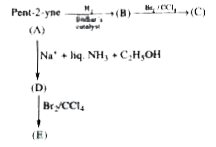
Compounds (B) and (D) are, respectively05:18View SolutionMention the hybridisation stste of each carbon in the following compounds.
CH3−CH=C=O,CH3−C≡C−CH3,CH3COCH3andCH2=CHCN02:26View SolutionWhy the use of hard water is disadvantages?
03:26View SolutionIn the following sequence of reactions, products (B) to (E) are formed:

Product (B) is:04:07View SolutionIn the following reaction sequence, the products (B) to ( E) are formed. . The structure of product (B) is :
03:16View Solution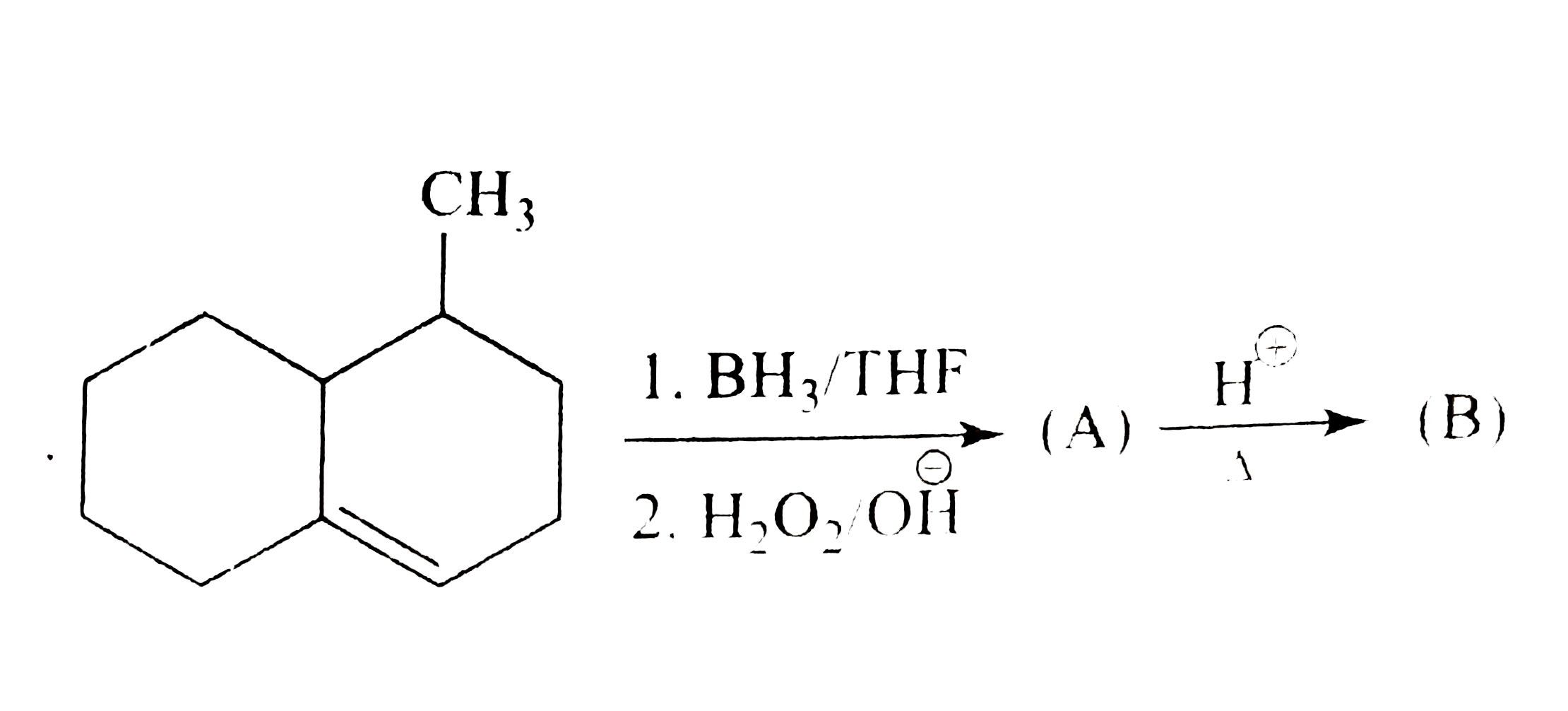 The product (B) is :02:49View Solution
The product (B) is :02:49View Solution
The products (A), and (B) are:06:07View Solution
The products (A),and(B) are:01:53View Solution , Product (B) is :02:08View Solution
, Product (B) is :02:08View Solution (B), Product (B) in this reaction is:02:36View Solution
(B), Product (B) in this reaction is:02:36View Solution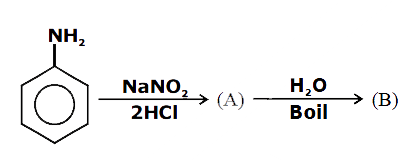
Product (B) will be :02:24View Solution
(Major product). The major product (B) is03:17View Solutionगुणनफल ज्ञात कीजिए-
(a+b)(a−b)03:51View Solution


